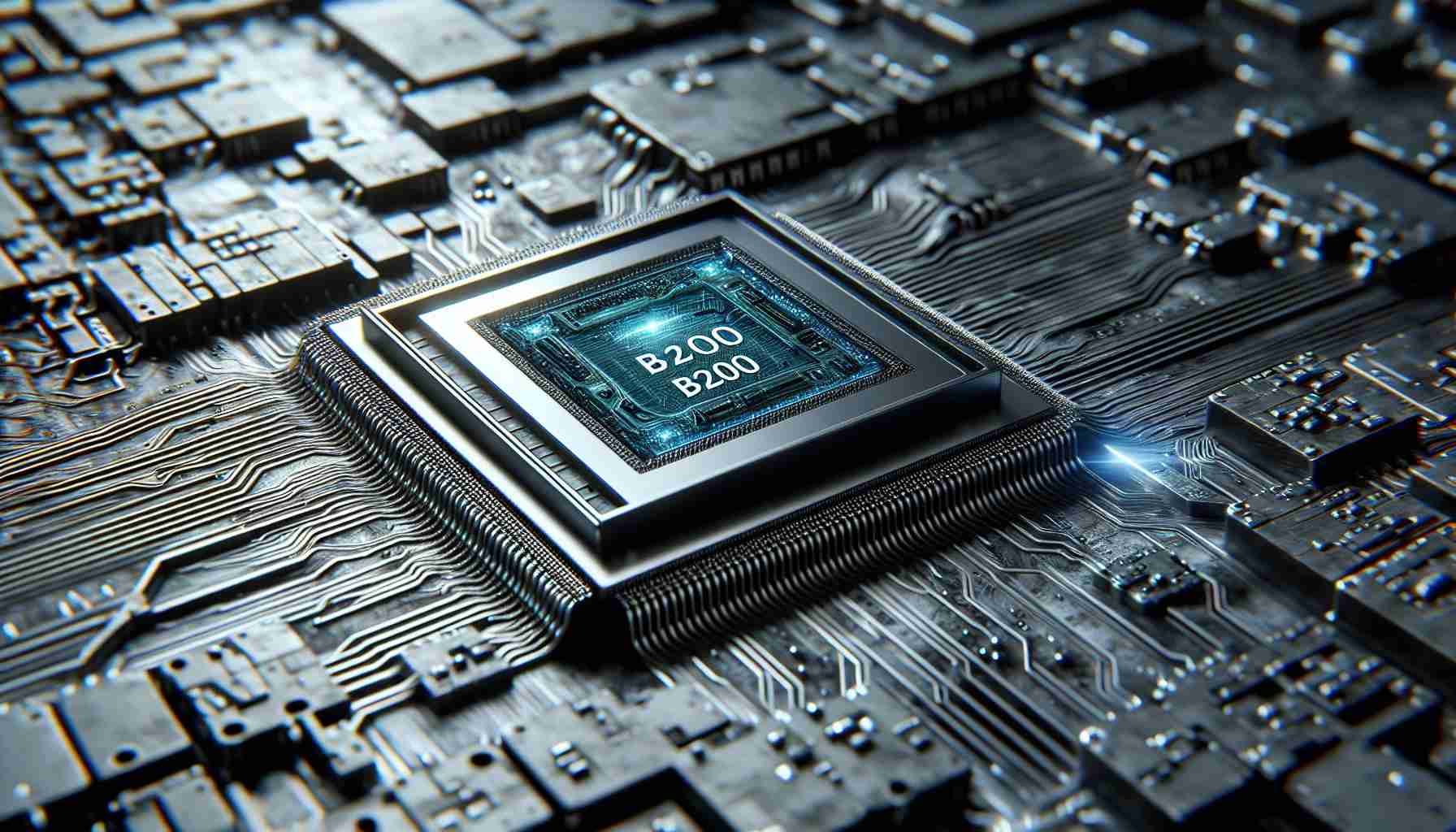Nvidia, a leading name in the artificial intelligence industry, is making waves once again with its latest innovation. CEO Jensen Huang unveiled the revolutionary B200 chip at the company’s annual developer conference, marking a significant leap forward in AI capabilities. This new flagship chip is a game-changer, boasting speeds that are 30 times faster than its predecessor, particularly in tasks such as providing answers from chatbots.
The B200 chip, codenamed “Blackwell,” is a marvel of engineering. It combines two squares of silicon, doubling the power of the previous offering and merging them into a single component. This technological breakthrough enables developers to elevate their AI models and deliver unprecedented performance. As a result, big-name partners like Microsoft, Google, and Amazon have already embraced the B200 chip, incorporating it into their cloud computing services.
While specific details regarding its performance in data crunching for chatbot training are not yet disclosed, industry experts are applauding Nvidia’s continued pioneering spirit. Despite not divulging the price, Huang’s unveiling of the B200 chip has made investors and technology enthusiasts take notice. Although the company’s stock dipped slightly in extended trade, Nvidia continues to be one of the most valuable companies in the US stock market, trailing only Microsoft and Apple.
Tom Plumb, CEO and portfolio manager at Plumb Funds, emphasized Nvidia’s unwavering dominance in graphics processing, noting that competitors like AMD may pose a challenge, but Nvidia’s lead remains insurmountable. The company’s ability to stay at the cutting edge of technology solidifies its position as a market leader.
Moreover, Nvidia’s influence extends beyond the chip itself. Major players in the tech industry, including Amazon, Google, Microsoft, OpenAI, and Oracle, are poised to leverage the power of the B200 chip in their cloud-computing services. This widespread adoption further solidifies Nvidia’s position as an industry powerhouse.
Huang didn’t stop at the B200 chip. He also announced Nvidia’s software’s capability to stream 3-D worlds to Apple’s new Vision Pro headset, showcasing the company’s commitment to pushing boundaries and achieving new frontiers in AI integration.
In addition to revolutionizing chip technology, Nvidia is also contributing to advancements in robotics. Huang introduced a new series of chips specifically designed for creating humanoid robots. This exciting development opens up a world of possibilities for the integration of AI into robotics, further bridging the gap between humans and machines.
Nvidia’s dedication to pushing the boundaries of AI technology continues to shape the industry. With the B200 chip and its impressive speed improvements, the company cements its position as an unrivaled leader in artificial intelligence. As Nvidia paves the way for a future governed by AI, the possibilities are endless.
Frequently Asked Questions (FAQ)
1. What is the B200 chip?
– The B200 chip is Nvidia’s latest flagship AI chip that offers significant improvements in speed and performance for tasks like serving up answers from chatbots. Its codename is “Blackwell,” and it combines two squares of silicon into a single component, doubling the power of its predecessor.
2. Which companies are partnering with Nvidia for the B200 chip?
– Major companies such as Microsoft, Google, and Amazon have partnered with Nvidia for the B200 chip, incorporating it into their cloud computing services.
3. How fast is the B200 chip compared to its predecessor?
– The B200 chip is 30 times faster than its predecessor, particularly in tasks like providing answers from chatbots.
4. Will the B200 chip be used in cloud-computing services?
– Yes, Nvidia has announced that Amazon, Google, Microsoft, OpenAI, and Oracle are expected to utilize the B200 chip in their cloud-computing services.
5. What other announcements did Nvidia make?
– In addition to unveiling the B200 chip, Nvidia’s CEO Jensen Huang highlighted the company’s software’s ability to stream 3-D worlds to Apple’s new Vision Pro headset. Moreover, he introduced a new series of chips designed for creating humanoid robots, showcasing Nvidia’s commitment to advancements in robotics.
Sources:
– Hindustan Times (www.hindustantimes.com)
For more information about the artificial intelligence industry and market forecasts, you can visit the following sources:
1. Business Wire: Business Wire provides comprehensive coverage of industries, including artificial intelligence, with market reports, industry analysis, and forecasts.
2. PwC: PwC offers insights and forecasts on the global artificial intelligence market, exploring its impact on various industries and providing valuable information for businesses.
3. MarketsandMarkets: MarketsandMarkets is a leading market research firm that provides in-depth reports and forecasts on the artificial intelligence industry, covering various segments and regions.
Issues related to the artificial intelligence industry or products include:
1. Ethical concerns: As artificial intelligence becomes more advanced, there are growing concerns about the ethical implications of its use, such as privacy, bias, and job displacement.
2. Data privacy and security: The massive amount of data required to train and power AI systems raises concerns about data privacy and security vulnerabilities.
3. Regulatory challenges: The rapidly evolving nature of AI technology poses challenges for regulators to keep up with its development, resulting in uncertainty and potential legal issues.
4. Transparency and explainability: AI algorithms can be complex and difficult to understand, making it challenging to explain the decision-making process of AI systems. Ensuring transparency and interpretability is crucial for building trust in AI technology.
These resources and issues provide a broader understanding of the artificial intelligence industry, market forecasts, and relevant concerns for further exploration.

